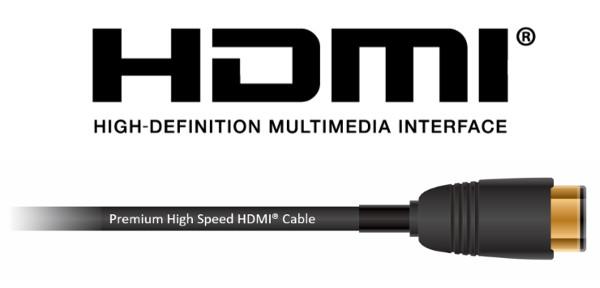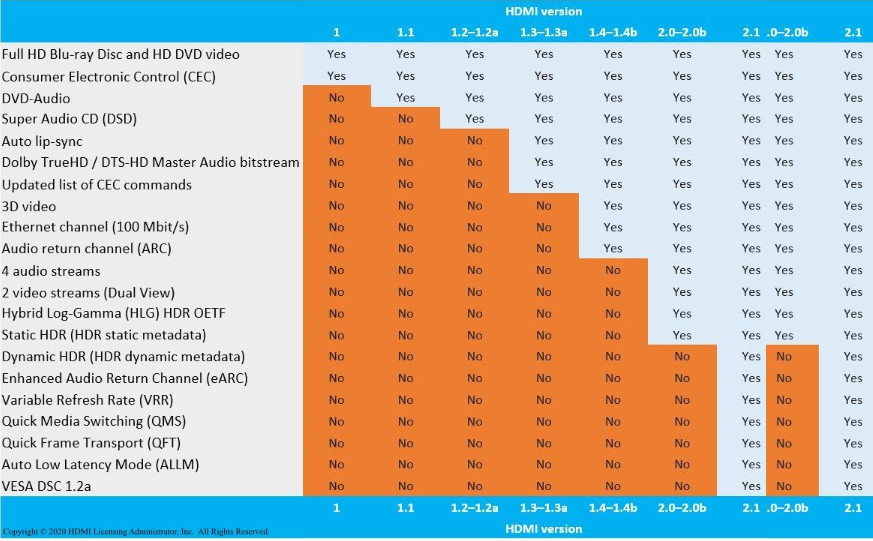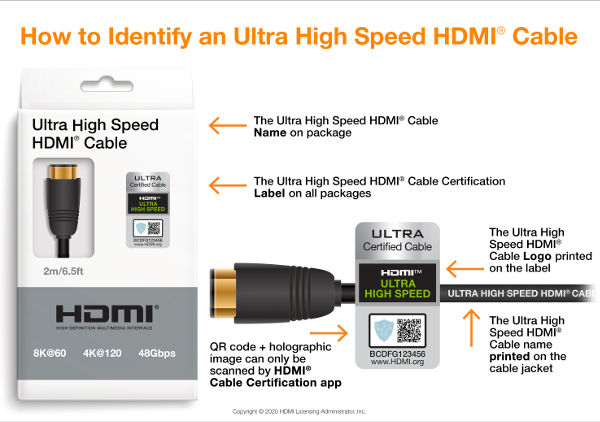The State of HDMI 2.1

Three years ago the HDMI Forum released the highly anticipated Version 2.1 of the HDMI specification, which paved the way for a major boost in A/V performance with support for higher video resolutions, high-dynamic range (HDR), and increased bandwidth plus important features like variable refresh rates (VRR) for gaming and eARC (enhanced Audio Return Channel) for simplifying system setup. We recently caught up with Forum president David Glen to get an update on where HDMI stands today and where it’s going in the future.
S&V: HDMI 2.1 has been a godsend for A/V enthusiasts and gamers who constantly pursue the best performance available. From release to implementation, can you talk about the role HDMI 2.1 has played, and continues to play, in advancing the home entertainment experience?
 David Glen: As the home entertainment ecosystem continues to evolve, HDMI remains at its core as the interface to connect it all together. With the 80-plus members of the HDMI Forum representing companies from all aspects of the home entertainment ecosystem we’ve been able to see ahead into the future and build the HDMI 2.1 specification to address both the 4K 120 Hz gaming change happening now with the release of next-generation game consoles and the ongoing transition to 8K.
David Glen: As the home entertainment ecosystem continues to evolve, HDMI remains at its core as the interface to connect it all together. With the 80-plus members of the HDMI Forum representing companies from all aspects of the home entertainment ecosystem we’ve been able to see ahead into the future and build the HDMI 2.1 specification to address both the 4K 120 Hz gaming change happening now with the release of next-generation game consoles and the ongoing transition to 8K.
There are over 1,200 adopters of the HDMI 2.1 specification. We invite any of them to join the HDMI Forum and get involved in developing future versions of HDMI, but we don’t expect them all to get involved. So it is important to publish standards well ahead of market need to ensure products will be available at the right time from many vendors beyond those who are members of the HDMI Forum.
In the time from publication of a new specification to products getting to market, the Forum sets up compliance tests and checks them against early product designs. We also do “plug test” events where adopters can test their prototypes for interoperability with other products and cables from various vendors.
S&V: Is there a single accomplishment that stands out when you reflect on the A/V industry’s implementation of HDMI 2.1?
Glen: Not fair to limit me to just one thing! In general it would be how fast the market has embraced HDMI 2.1. As ALLM (auto low latency mode) often needed only a firmware update, we saw game consoles and some TVs support it early. eARC required updated hardware, but the first AV receivers with it were out in well under a year.
S&V: What impact, if any, has the pandemic had on HDMI technology? Has it, for example, restricted availability of chipsets?
Glen: Our impression is that sales of HDMI based products has not been affected by the pandemic, and in some cases has improved with the demands of more in-home entertainment and work from home. In terms of HDMI 2.1 roll-out, the lockdown did slow us down a little on getting the Ultra High Speed (UHS) cable program launched, but we are now seeing cables with UHS labels in stores. We’re not aware of any delays in chipsets.

S&V: In a recent video projector review, Kris Deering expressed concern that HDMI 2.1 chips haven’t hit the projector world yet and are still very limited on TVs. What’s the holdup?
Glen: As I mentioned, there is by design a delay between new HDMI specs and products getting to market. In general the more complex the design changes, the longer the delay. Enabling the HDMI link speeds for 4K 120 and 8K 60 does take significant hardware design and software effort. We are seeing many chipsets for source and sink devices supporting these HDMI 2.1 link rates coming to market in 2020, and expect more in 2021. Actually this is the timeline I expected when HDMI 2.1 was published.
S&V: Press reports have noted an HDMI 2.1-related incompatibility issue that prevents the Xbox Series X game console and certain Nvidia graphics cards from passing 4K 120fps HDR and 8K 60fps HDR content through to the latest “8K-compatible” AV receivers from Denon and others. Temporary workarounds notwithstanding, when can we expect to see a permanent fix?
Glen: The AVR vendors will have to address this one in terms of updating their products. This is not a problem with the HDMI 2.1 specification. [Click here for the official statement from Sound United and what it’s doing to fix the problem and here for Yamaha’s statement.]
S&V: Shifting gears a bit, the Forum announced a certification program for Ultra High Speed HDMI cables this past January at CES 2020 and the first certified cables are now trickling into the marketplace. I think almost everyone would agree that buying HDMI cables is a confusing experience. What is the goal of the certification program and, more specifically, what does it mean not only for A/V enthusiasts who read Sound & Vision but for general consumers?
Glen: The primary goal of the Ultra High Speed HDMI cable certification and labeling program is to help cut through the confusion that surrounded some HDMI cables in the past. All UHS cables are required to be tested and certified at special facilities that are audited and authorized by the HDMI Forum and show a label consumers can scan with their phones to validate the authenticity of the cable. This lets them know the cable supports all of the features and speeds of HDMI 2.1 and has been tested for EMI (electromagnetic interference) to minimize radio-frequency interference. The UHS cable program includes lifetime compliance verification with in-market cable auditing. [Click here for more on the HDMI cable-certification program.]

S&V: Three years in from the launch of HDMI 2.1, what is the Forum focused on these days? Put another way, in which areas does work still need to be done? And what is being done in the area of futureproofing?
Glen: In 2020 we’ve been really busy with launching the UHS cable-certification program. Also continuing the interop plug testing of new HDMI 2.1 products and continuously improving our HDMI 2.1 compliance testing based on experience gained in these test events. This normally requires a lot of travel, and I’ve been amazed by how much we’ve been able to get done this year without travel.
2021 will see more interop testing and continuous evolution of the certification program based on learning from the interop tests, which is normal for the first couple of years that chipsets and products are coming out. Hopefully it will get easier as the world starts to open up from the lockdown, but we will continue to make lots of progress even without travel. We can still ship test systems around the world.
S&V: One of the Forum’s goals is to guide the future direction of HDMI technology. What’s on the horizon that Sound & Vision readers can look forward to?
Glen: HDMI 2.1 and Ultra High Speed HDMI cables are just getting started and we should all look forward to more new HDMI devices coming out over the next few years based on the current specification, which supports 8K at up to 120 Hz. So there is room to grow.
It’s really too early to be thinking about major upgrades to HDMI 2.1, or considering delaying any upgrade in anticipation of another major update of HDMI coming along again soon. The HDMI Forum has great participation from across the industry and will know well ahead of time when there will be the need for another major update, but it is too soon to speculate now on what will be driving another big update, or when it will happen. That being said, ideas are being brought to the table and discussed within the HDMI Forum.
























































